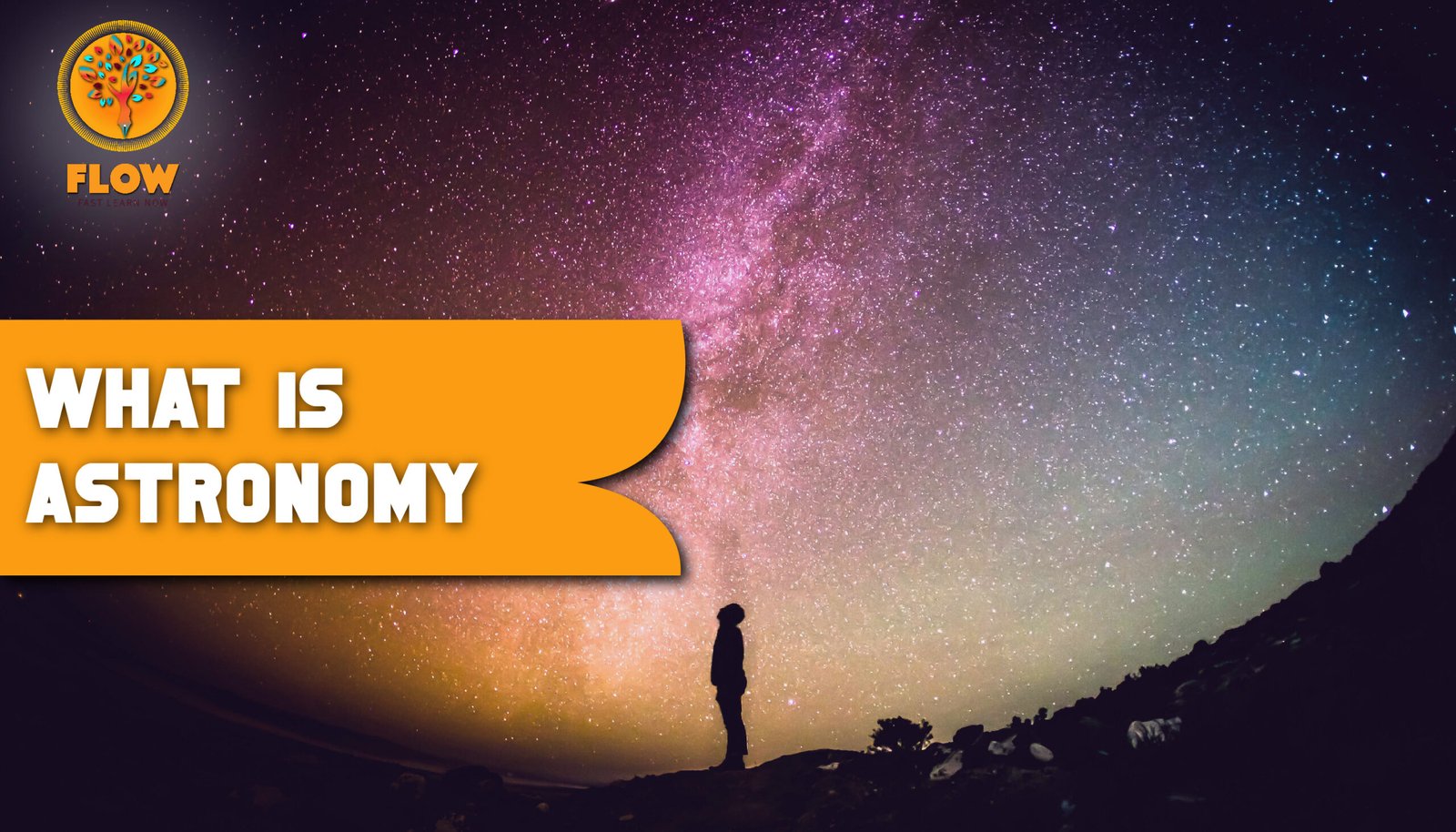Introduction
Hello mortals!
Are you here because you don’t know what is astronomy? and you have an astronomy exam tomorrow… and the only things you know are that the Milky Way and Mars are candy bars?
Worry no more, as this informative blog takes you on an epic voyage through space as we investigate the wonders of galaxies, black holes, planets, stars, and even the destiny of the universe. So buckle up and prepare to be enchanted by the marvels of the universe.
I’d say astronomy is still studying stuff in the sky, but it’s branched out quite a bit from there. Borders between it and other fields of science are fuzzy…
But what exactly is astronomy? This isn’t necessarily an obvious thing to ask. When I was a kid, it was easy: Astronomy is the study of things in the sky. The sun, moon, stars, galaxies, and stuff like that. Take, for example, Mars. When I haul my scope out to the end of my driveway and look at Mars, that’s astronomy, right? Of course! What about the rovers there? Those machines aren’t doing astronomy, surely. They’re doing chemistry, geology, hydrology, petrology… everything but astronomy! Now, though, I limit my gazing to my small backyard telescope and instead focus on talking and writing about astronomy. However, the fact that I still identify as an astronomer should demonstrate to you how flexible the field is.
Untangling the Science World
Science is fundamentally both a corpus of information and a process for learning it. It recognizes that our current knowledge may not be totally correct and that the search for the truth requires careful observation and hypothesis testing. Since science accepts the potential of being incorrect while attempting to explore the uncharted, it is built on the principles of honesty and humility. The ever-evolving character of scientific knowledge must be kept in mind as we go through the study of astronomy.
Astronomy: Putting People in Their Place
Astronomy is unique. Even though it’s still science, astronomy puts you in your place. Astronomy has informed me that our planet, which is 13,000 kilometers big and primarily made of molten rock and metal, is encircled by a magnetic field that shields us from the Sun’s 150 million kilometers distant bombardment of subatomic particles. In addition, this is illuminating the planets, asteroids, dust, and comets that are speeding past the Kuiper Belt, through the Oort Cloud, and into interstellar space, past the nearest stars, which revolve in a massive spiral galaxy known as the Milky Way along with gas clouds and dust lanes. Our Local Group, which includes Andromeda and Triangulum, is on the outskirts of the Virgo galaxy cluster, which is a part of the Virgo supercluster, one of many enormous structures that stretch most of the way across the visible Universe. It has a supermassive black hole at its center and is surrounded by 150 globular clusters and a halo of dark matter and dwarf galaxies, some of which it is eating. The multiverse may be a component of an infinitely greater multiverse that spans eternally in both time and space. It is 90 billion light years vast and growing every day, quicker now than yesterday due to mysteriously dark energy. See? You are put in your place by astronomy.
Astronomy teaches us that we are inhabitants of a sphere made of molten rock and metal that is 13,000 kilometers wide, shrouded in a thin atmosphere, and protected by a magnetic field. The celestial bodies that lie millions of kilometers distant from us are related to us as simple dwellers of a huge cosmos. Astronomy shows how little we are in the scheme of things, from the Sun’s brightness to the furthest reaches of the Milky Way.
Specifying Astronomy in the Present
While astronomy has traditionally concentrated on the study of celestial objects, its range has grown throughout time. The distinctions between astronomy and other branches of research are more hazy since astronomy now includes a wide spectrum of scientific endeavors. While using telescopes to observe celestial objects remains important, the subject has expanded to encompass subfields like astrophysics, astrochemistry, and astrobiology.
The Multifaceted Astronomers
The function of an astronomer has evolved within the field of astronomy. These explorers of today don’t merely look through telescopes. They might be engineers, software programmers, mathematicians, and more. Astrophysicists investigate the physical properties of space, researching how galaxies develop and stars arise. Engineers create telescopes, detectors, and other tools to study the universe. These intricate devices are operated and maintained by technicians, who guarantee accurate observations. Not to mention the lecturers, authors, videographers, and artists who share the glories of astronomy with the general public.
Do the data match the physical theory explaining how stars explode, galaxies develop, or gas moves across space? You best be proficient in math and physics, however, since it is how we test our theories. An astrophysicist is someone who works in the field. Naturally, those telescopes and detectors are made by humans. Engineers are needed to create them, as well as technicians to operate them. The majority of astronomers no longer operate the telescopes themselves; instead, someone skilled in doing so does so on their behalf. Some of the devices go to other planets, like the moon and Mars, while others travel into space.
We also need software developers, engineers, and astronomers who can construct those. Finally, we need someone to tell you everything that happened. educators, academics, authors, filmmakers, and even artists. I’ll tell you what, then: Who am I to say you aren’t an astronomer if you have an interest in the universe, love to gaze up at the stars, or want to know what’s happening just over your head?
So I’ll tell you what: If you have an interest in the Universe, if you love to look up at the stars, if you crave to understand what’s going on literally over your head, then who am I to say you’re not an astronomer?
A Window into the Past
The history of astronomy goes back to when people started looking up at the sky. The motions of the sun and moon, as well as the shifting locations of the stars and their impact on the weather and seasons, were all patterns that early civilizations saw in the sky. With the help of this celestial awareness, farmers were able to plan their planting and harvesting seasons. These findings did, however, lead to the development of astrology, an effort to connect celestial occurrences with human fates that subsequently developed into a pseudoscience.
Refuting Geocentrism
The geocentric paradigm claimed for millennia that Earth was at the center of the cosmos and that all other celestial bodies revolved around it. In light of the apparent mobility of the sky above, this viewpoint looked reasonable. Only through the revolutionary work of Copernicus, Tycho Brahe, Kepler, and Newton did the heliocentric model, which put the sun at the center of the solar system, come to prominence. This revolution represented a huge advancement in our knowledge of the universe.
The Development of Astronomy
The field of astronomy has undergone several revolutions throughout the years. Each step brought us closer to understanding the secrets of the cosmos, from the creation of precision tools like telescopes and cameras to developments in mathematics and physics. With fresh discoveries like the presence of exoplanets, the profusion of celestial objects, and the interconnection of cosmic processes, astronomy never ceases to astound us.
Conclusion
As we come to a close on this introduction to the interesting field of astronomy, it is important to keep in mind that there is still much to learn about the cosmos. Although astronomy has advanced considerably, there is still a great deal to discover and discover. Stars are the lights in the sky, and they conceal endless tales of cosmic marvels. We get a little bit closer to understanding the complex network of the universe with each new discovery. Let’s continue our journey of the universe, where each observation and finding reveals more about the stars’ secrets and how they fit into the larger scheme of the cosmos.
Nature has more imagination than we do. It comes up with some nutty stuff. We’re clever too, we big-brained apes. We’ve learned a lot, but there’s still a long way to go. So, with that, I think we’re ready. Let’s explore the universe.




